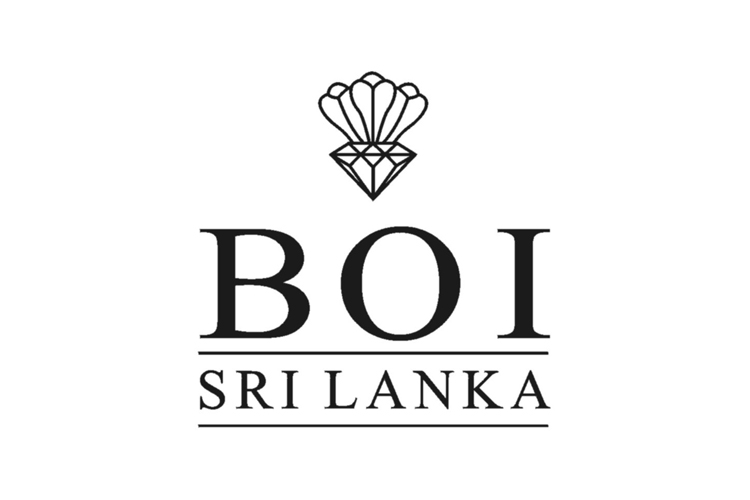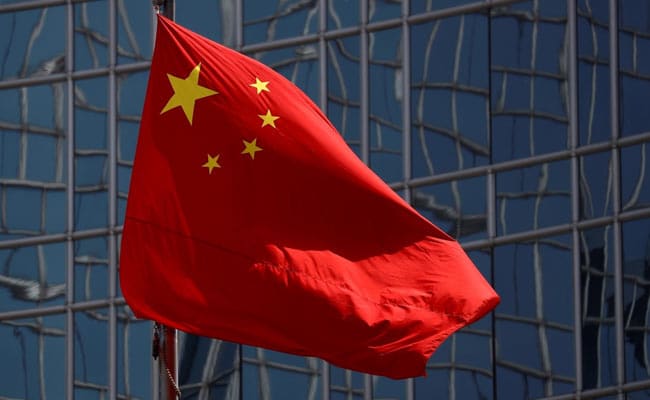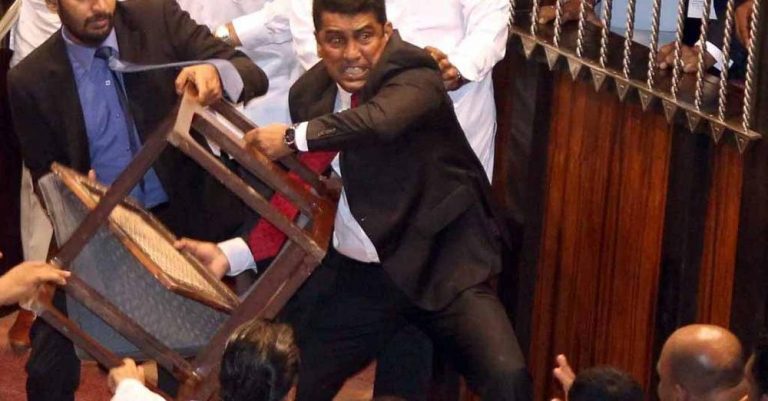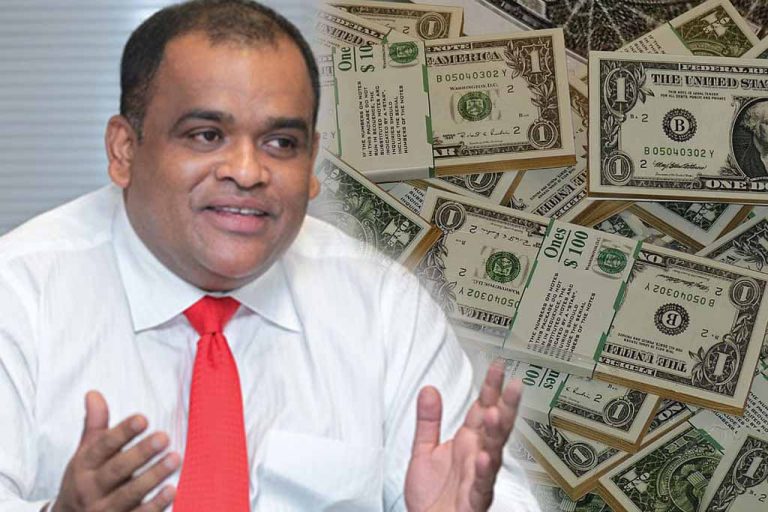Businessman Dhammika Perera has outlined 12 key strategic plans to help Sri Lanka overcome the current severe foreign exchange crisis.
This dollar earning strategy and action plan is expected to increase Sri Lanka’s per capita GDP from US $ 4,000 to US $ 12,000.
Dollar earning strategies
Action plan to generate an additional $ 8 billion a year in foreign exchange inflows through 12 major strategic plans.
The government does not have to invest any additional capital for these 12 strategies.
- Increase foreign currency bank deposits by $ 5 billion within 5 years.
- A 10-year resident visa is required for foreign nationals who deposit US $ 100,000 in banks in Sri Lanka for 10 years.
- If this scheme is launched, Sri Lanka will be able to generate US $ 5 billion in foreign currency deposits.
- This will enable us to secure US $ 1 billion a year in foreign currency deposits by launching the above scheme.
- In addition, the process of opening and approving foreign currency bank accounts should be done online.
- Extension of validity of tourist visas up to 6 months to increase tourist income by 10%.
- Permission should be granted to issue a tourist visa valid for six months instead of a tourist visa valid for one month.
- The introduction of a six-month tourist visa will increase the estimated tourist revenue of $ 4.5 billion per year by 10%, or additional $ 450 million in additional tourist revenue.
- The current outflow of USD2.5 billion due to students studying abroad is to be reduced by 20%, which will save USD500 million. In addition, Sri Lanka can earn USD2.5 billion inflows by attracting international students.
- Currently, 35,000 new students leave the country each year for higher education. In addition, 70,000 students are already enrolled in higher education as second- or third-year students at foreign universities.
- As 105,000 Sri Lankan students choose foreign education for their study purposes, it generates $ 2.5 billion in foreign exchange inflows annually.
- The following measures should be taken to reduce the outflow of US $ 2.5 billion in foreign exchange by 20% and to attract more foreign students.
A) Local private higher education institutions such as NSBM, SLITT and E-Soft should be established with the approval of the University Grants Commission and grant the required recognition as Private Universities in Sri Lanka.
B) Providing tax concessions / breaks and other incentives for the expansion of new private university institutions and existing small capacity private universities.
C) Improving the global rankings of public universities in Sri Lanka.
D) Introduce an international education strategy to attract more foreign students to the country and launch a new program called ‘Study in Sri Lanka’ to attract foreign students to choose Sri Lanka as their center of higher education.
E) Establish a task force to bring 35,000 foreign students to Sri Lanka through the “Study in Sri Lanka” program and set the required targets. This will reduce the outflow of US $ 2.5 billion in foreign exchange due to 35,000 local students going abroad for higher education.
Starting this project can save US $ 500 million annually.
4. Introduction of an international student visa to earn foreign exchange and increase international education income through fees charged by foreign students.
- Private higher education institutions such as NSBM, SLITT, CINEC, E-Soft, Horizon and IIT should be allowed to enroll international students based on student visas from 3 to 4 years.
- An online student visa application process should be introduced, following the best practices of global student visas issued by countries such as Australia, New Zealand, Canada, the United Kingdom and the United States.
- A 10-year plan to increase remittances from US $ 7 billion (Prior to the covid outbreak) to US $ 24 billion.
- Increasing the monthly remittances sent to Sri Lanka by migrant workers from US $ 290 to US $ 1,000.
- Prior to the outbreak of the covid epidemic, 2 million migrant workers sent an average of $ 290 a month to their families living in the country.
A) To increase the monthly remittances from US $ 290 to US $ 1,000, the unskilled workforce should be provided with the necessary qualifications and training, targeting 10 foreign countries that offer high-paying jobs. With the implementation of this, Sri Lanka will be able to earn US $ 24 billion in remittances annually over a period of 10 years.
B) The number of foreign workers leaving the country for employment has decreased compared to the years before the covid 19 epidemic. The solution is to increase the number of foreign workers leaving Sri Lanka and to appoint a committee to identify and address the current challenges.
C) Maintaining one Telegram team per foreign country to improve the conditions relevant to the field of foreign employment for Sri Lankan migrant workers.
I. All Sri Lankan Migrant Workers working/have served in other countries should be invited to join the Telegram Team of the relevant country.
II. The main objective of this group is to gather ideas and suggestions from the above sectors to further enhance foreign employment opportunities in Sri Lanka.
II. A team from the Sri Lanka Bureau of Foreign Employment should be appointed to gather these ideas and suggestions.
IV. Meet weekly to find solutions to current challenges or to implement various new initiatives to improve this sector.
V. This team should report to the Minister of Foreign Employment on a weekly basis with identified challenges and solutions to those challenges.
D) Foreign Employment Agencies in Sri Lanka should hold a monthly performance review meeting with the Minister of Foreign Employment on the number of foreign employment they have obtained for Sri Lanka.
E) Launch a program for all Sri Lankan embassies in different countries to find and share information on the most sought after and highest paid jobs in their country or city of residence. Ensuring that Sri Lankan migrant workers are located in those countries or cities (destinations) for higher paying jobs.
For those jobs, teaching and training must follow the best curricula globally.
F) Maintain another telegram team to improve the training and skills of migrant workers.
Create short videos on personal development, behavioral training, hygiene practices, language training opportunities, and customer service so that everyone can access and share.
G) Conducting workshops on government sponsored workshops for foreign employment agencies in Sri Lanka to increase the number of foreign employment opportunities provided to Sri Lankan migrant workers.
H) Launch of a website detailing the current job opportunities in the global job market for access to Sri Lankan migrant workers.
I) Development of the existing Eldercare Assistant Professional Program to earn US $ 1 billion in remittances and increase the number of Migrant Employees relevant to the Adult Care Assistant profession through that professional program.
- The Tertiary and Vocational Education Commission (TVET) and the private sector should work together to create a plan to create 100,000 migrant workers as adult care assistants targeting the European market.
- Necessary training should be provided for the migrant worker with a monthly salary of US $ 1,200 or more. Introduce short courses that can be completed within 3 months under the Tertiary and Vocational Education Commission (TVET) Elder Care Assistant Training Program. For example, the University of Moratuwa and the DP Education have launched a free online course on trainees called “Full Stack Development”. The website where the course can be accessed: https://open.uom.lk
- Advanced Level Science stream students with English language proficiency can use this program.
- Sri Lanka could earn $ 1 billion in foreign exchange remittances if it produced 100,000 senior caregivers with a monthly salary of US $ 1,200.
I) Identify all other foreign jobs in demand such as patient care assistants, draftsmen, bricklayers, air conditioners and mechanical services, plumbers and hairdressers and design or update TVET curricular that are targeted to suit that demand.
- Create a pool of migrant workers with physical and medical standards such as height-weight ratio, age, eyesight, and general health habits awareness, which are key areas to consider when introducing these standards.
J) All services of the Bureau of Foreign Employment, such as passport services, pre-departure approvals and credit facilities for migrant workers and services for recruitment agencies such as obtaining licenses, renewals within the 24 districts Establishment of “Multi-Service Providing Centers”.
In addition, the following services should be provided to all 24 districts through the “Multi-Services Centers”.
I. Services of the Department of Immigration and Emigration, including the issuance of passports.
II. Services of the Department of Registration of Persons including Issuance of National Identity Cards
III. Services including consular services provided through the Ministry of External Affairs.
IV. All services of the Police Department including police and forensic medical reports.
V. Services of the Department of Labor, including EPF, ETF and other fund withdrawals.
VI. Services of the Ministry of Education and the Department of Examinations
VII. Services of the Department of Law and Justice
K) Collaborate with employment agencies in other countries to find employment for migrant workers in Sri Lanka.
Starting the aforementioned activities could save US $ 1.3 billion annually.
- Increasing foreign direct investment
Regional competition should be increased by introducing tax breaks and other incentives.
Appoint a committee to improve the following ratings
A) Global Innovation Index
B) Corruption Eradication Index
C) Global Competitiveness Index
- Generate US $ 5 billion from ICT-related earnings.
Public universities’ existing IT and communication technology, engineering and programming degrees should be allowed to be used by private educational institutions and offered as external degrees to their students. Every 6 months, examinations can be held following the procedures of state universities, which require 500,000 students to complete their education and enter the IT industry within a period of 5 years.
I. For example, the University of Moratuwa and the DP Education launched a free online course on trainees called “Full Stack Development”. The website where the course can be accessed: https://open.uom.lk
To increase the enrollment of students, state universities should also offer 10 times more of their ICT-related courses online. This will enable a large number of students to qualify for ICT and enter the field of Information and Communication Technology.
As a result, ICT-related earnings could reach US $ 5 billion.
Starting the above proposals could generate an additional $ 750 million a year.
8. Establish budget airline hubs to generate USD2 billion.
A) In countries such as Thailand, Singapore, Malaysia, and Vietnam, 50% of tourist arrivals are on budget airlines.
B) In Sri Lanka, out of the 80,000 hotel rooms, only 30,000 hotel rooms are classified as 5 or 4 stars or any star category. The remaining 50,000 hotel rooms are in the budget accommodation category.
C) In order to generate USD2 billion from budget airline hubs, following initiatives to be executed,
I) Transform Rathmalana and Mattala airports into international budget airline hubs.
II) Attract more low-cost carriers (budget airlines) to arrive in Sri Lanka to accommodate low-cost carrier passengers.
With the above initiative, additional 1 million tourist arrivals can be expected. This would result in generating USD2 billion in earnings.
III )Encourage the establishment of domestic airline services.
IV) Existing airports in Trincomalee, Batticaloa, Koggala and Digana in Kandy should attract high volumes of domestic aircraft by initiating the following
i)Landing, ground handling, and parking rates are to be revised and reduced to increase the affordability for domestic airline carriers.
ii)As a result, the economic benefits of tourism will spread to far corners of Sri Lanka.
Annual income generation of USD2 billion can be achieved through the above-mentioned initiatives.
9. Generate USD600 million income with coconuts.
- Annually, 1.5 million coconut seedlings are planted. Through a 5-year program, 20 million additional new seedlings are to be planted. This is achieved by planting additional 4 million seedlings every a year.
- As a result, 1.2 billion nuts are produced as an additional harvest.
- If one coconut product is sold at an export price of USD0.50, from 1.2 billion coconuts, an income of USD600 million can be generated.
10. Outward payments can be deposited in USD to earn interest payments in USD.
- Outward payments such as dividend payments, travel, construction, insurance, telecommunication, computer service, royalty, and air and sea transport fees can be converted to USD and deposited.
- -These can be deposited for a 3-year period with an interest rate decided by the Government. For example, at an interest rate of 6%.
An annual deposit of USD300 million can be received by implementing this action item.
11. Save USD1 billion by allowing the private sector to invest in new power plants powered by solar or coal in Norochcholai and Sampur.
- For the current 900MW power generation using coal, the total coal consumption cost at the current market price is USD50 million per month. Thus, the annual coal consumption cost to generate power is USD600 million.
- In addition, the current 900MW power generation using diesel and furnace oil cost at the current market price is USD135 million per month. Thus, the annual cost of fuel is USD1,620 million.
- As cost-saving power generation solutions, below 2 options are proposed,Option 1: Solar farms
- To generate 900MW of power to consume at day time, 2,000MW new solar farms should be constructed.
- As a result, current 900MW power generation at daytime using fuel, which has an annual fuel cost of USD800 million, can be replaced by new solar farms.
- Thermal powered plants should only be operational at nighttime to generate electricity needed to use at nighttime.
- Private sector should be allowed to invest in the construction of 2,000MW new solar farms.
By implementing option 1, a saving of USD800 million can be achieved.
Option 2 : Coal power plant
Current diesel and furnace oil power plants that generate 900MW can be replaced by constructing an additional new coal plant for 300MW in Norochcholai and by constructing a new coal plant in Sampur for 600MW. By replacing the fuel power plant with coal, the annual fuel cost of USD1,620 million is now replaced with an annual coal cost of USD600 million, hence an annual saving of USD1 billion is achieved.
- Private sector companies should be given the opportunity to invest in constructing the 2 power generation plants in Norochcholai (300MW) and Sampur (600MW).
- Annually, USD800 million from option 1, and USD1 billion from option 2 can be saved.
12. Save USD200 million on Palm oil.
To save USD200 million outflow, lift the ban on planting palm oil trees.
Economic Revival of Sri Lanka
- Sri Lanka has an annual shortage of inflows of USD6 billion to accommodate basic needs such as fuel, gas, medicine, fertiliser, and food.
- By implementing the proposed 12 key strategies, an additional annual income of USD8 billion can be generated as future cash inflows.
- To effortlessly build confidence in Sri Lanka’s macro-economic stability and assist in unlocking international financing from International Financial Institutions (IFIs) such as International Monetary Fund (IMF), and World Bank (WB), additional cash inflows as suggested in the above action plan are to be generated, to reduce the deficit in the balance of payments.










